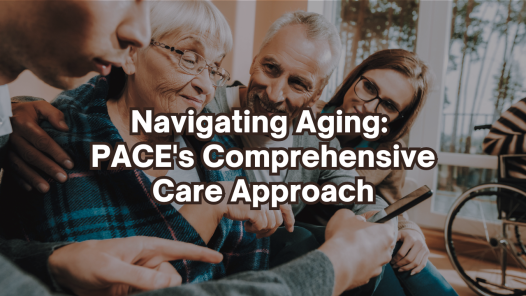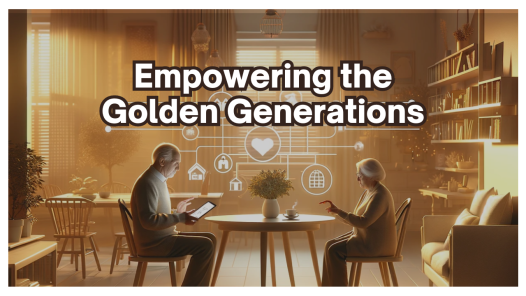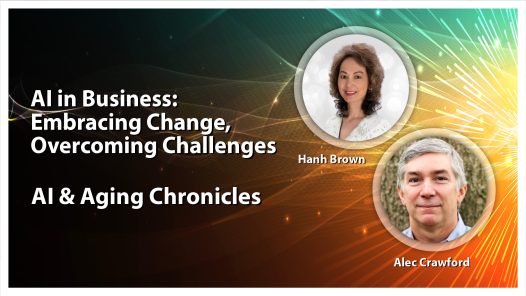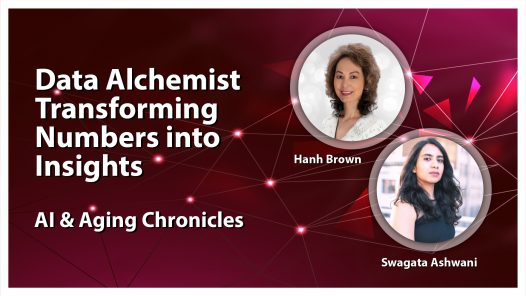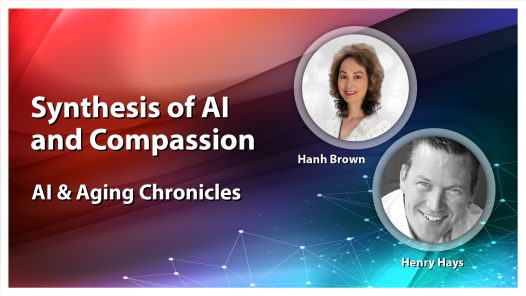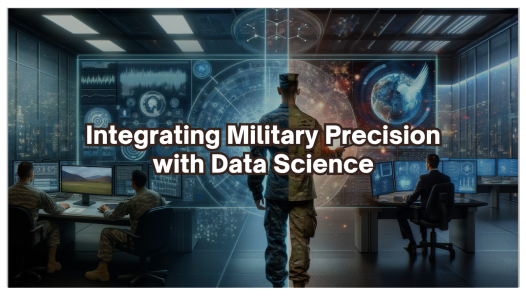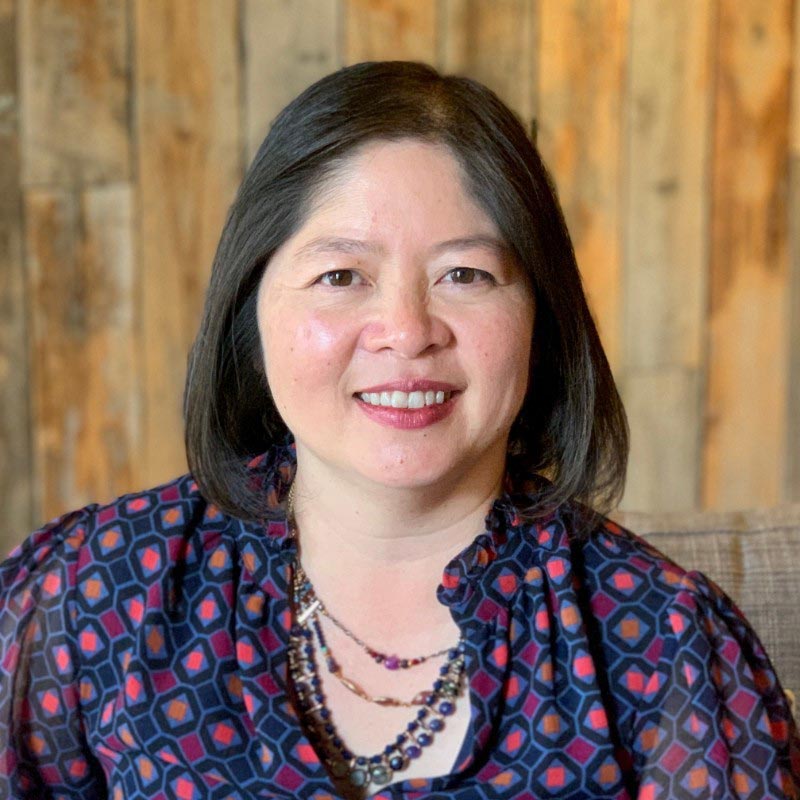
Ngan K. MacDonald is an executive with experience in analytics, information management, healthcare reform, IT strategy and business transformation. She leads projects, both large and small, in data, strategy and implementation. “Healthcare is in the midst of a technology and data transformation.” – Ngan K. MacDonald.
Ngan’s experience in both consulting and corporate enterprise data functions ensures a deep understanding of both what it takes for companies to execute their strategy and how to leverage expert resources in the market. “Data management and analytics go hand in hand to improve business outcomes and communication is key to bridging the gap between technology and business leaders for enterprise alignment.” – Ngan K. MacDonald.
Ngan believes passionately that healthcare data needs to be liberated and used to enable better healthcare outcomes. “We have enormous untapped opportunities in healthcare where we have an embarrassment of rich data that needs to be connected and made available to patients and their care givers.” – Ngan K. MacDonald.
Hanh Brown: [00:00:00] Today, my guest is Ngan K. MacDonald. She’s an executive with experience in analytics, information management, healthcare reform, it strategy and business transformation. She believes passionately that healthcare data needs to be liberated and use to enable better healthcare outcomes. We have enormous untapped opportunities in healthcare, where we have an embarrassment of rich data that needs to be connected and made available to patients and healthcare givers.
[00:01:43] Welcome again, I’m in Michigan. And where are you from? And then also, can you please share with the listeners, I guess your story how you came to healthcare?Ngan K. MacDonald: [00:01:51] how you came to healthcare? Yeah. So I am currently recording out of a suburb of Chicago. So my story and how I came into healthcare is essentially I’m a little bit of an opportunity.
[00:02:05] I was in consulting around data management and this is intelligence. And then when I started to have my kids, I wanted to travel less and consulting is a lot of traveling. And so I was given an opportunity to work with a healthcare service corporation and they were just starting up their data governance program. [00:02:24] And I was there for about eight years. And during that time, a lot of things have happened, including the passage of the affordable care act, which is a big game changer in our industry. And since then, I’ve also done left. HCSC, and then went to management consulting for a few years. And then I ended up back at the blue cross blue shield system with blue cross blue shield association. [00:02:51] And so there I was VP of enterprise data solutions and worked with all of the individual 36 different plans that are separate companies to basically implement a system-wide data strategy. And then after that, I recently left that position in March and I’ve been doing some advisory work as well as now. [00:03:13] I’m I have actually two roles. One is with Northwestern, university’s Feinberg school of medicine. We just started up a Institute for augmented intelligence and medicine. And in that role, I’m the chief. Of data operations. So bringing all of the data pipes together and making it AI and machine learning usable for the rest of the healthcare within the Northwestern community for efforts, hopefully eventually nationally. [00:03:39] And then my second role is as VP of healthcare business solutions architecture with an interoperability software vendor called health LX. And that interoperability is probably from a healthcare data standpoint, you know, Holy grail. It’s something that we’ve been working on for a long time. And so it’s very exciting to be in this place right now, where I think technology and the regulations come together to really make interoperability feasible.Hanh Brown: [00:04:10] Well, congratulation journey. Very exciting. Yeah. Can you give me a brief overview of the state of the data in the healthcare industry?
Ngan K. MacDonald: [00:04:18] Yeah. So their healthcare data is what I call data rich information poor. So we’ve been collecting data in healthcare for a very long time. So you’ve got your, your paper charts, you’ve got imaging data.
[00:04:32] You’ve got your claims data and all of that. There’s a lot of it, but it isn’t very well. Connected and it doesn’t come together. So therefore it makes it very difficult for either your or your doctor to have manage your care. Or even for someone outside like a caregiver, like a family member, to be able to take you to a specialist and to be able to show the specialist that, Hey, this is the information that is already accumulated on this individual. [00:04:59] And then in 2004, we thought, Hey, if we took all of these paper forms and we put them in electronic health records, we would solve the problem. And unfortunately in 2004, I think George W. Bush signed an executive order. That’s created the office of the national coordinator for health information technology. [00:05:19] And out of that act and subsequent accidents, then we’ve been trying to electrify all those records, but we’re creating more data, but we weren’t, there there’s an emphasis on how that data came together. There wasn’t any incentives to make that happen. So two things happen, right? One is the ACA. When the affordable care act was passed, there was a lot of incentive within the affordable care act to launch what I call value based care. [00:05:48] And that’s really moving away from every single thing that is done to you is a line item that gets paid. What we call fee for service, to being able to say that if you’re charged with the overall health and quality outcomes, For an individual patient. And so since the ACA kind of pushed that out, and there was a lot of incentives, all of a sudden for payers and providers and other people within that healthcare spectrum to talk to each other and communicate and share data. [00:06:18] And then in the waning days of the Obama administration, we have the 21st century cures act, which basically said interoperability, Has to be done without special effort and those words without special effort remove some of the barriers that we’ve talked about, the things like if you wanted your health record, you had to go into the hospital with either a CD or a USB key, or like you’d get a bunch of files and you would be charged and it made it very difficult. [00:06:49] For your health data to be combined together. And then just recently, this March, March seems to be a big month. This year, ONC and CMS passed some rules that basically enforced the 21st century cures act. And those rules basically said that the set out standards for how that interoperability was to happen and also set up dates for when payers and providers had to make this data available. [00:07:15] So this fall, all providers have to be able to send data about their admits discharge. Transfers between facilities or to the home available. And then we’re coming in early 2021. And being enforced in July is that payers have to make all clinical and claims and encounters data available via a fire API to if a patient asks for it. [00:07:44] So what this allows is something like an Apple health record to be able to access all of your data. Which is really exciting because that’s never happened before and without special effort. So that’s a state of the data. We’re just like them, the cost of data being made widely available.Hanh Brown: [00:08:03] What is stopping the different health care providers from sharing the data?
Ngan K. MacDonald [00:08:07] So there’s a couple of things. One is the incentives, right? In the past, I talked a little bit about the incentives for healthcare providers were like, well, if I share my data about my patient, like somebody else will come along and take my patient in the world of value-based care patient. The whole scope of their experience is aggregated.
[00:08:27] Into a contract where you have to make sure that, you know, all of their costs are rolled together, but removes the incentive for me to keep that information. But I, now I want all the information and where’s this person going? So one is incentive. And then the other one is a little bit of technology and standards. [00:08:46] We don’t know how we’re going to exchange that data together. We all know that we keep information about whether someone is male, female, or, and, but we. I may be storing it one way in one system in a different way in another. So it makes it very difficult to share. And so what these new rules say is that we will be using fire, which is the fast healthcare interoperability resources. [00:09:12] We will be using one standard in order to exchange that information. And it’s actually a standard that providers are used to already. It’s actually a new thing for most payers.Hanh Brown: [00:09:24] I think all in all, there’s been some progress, basically what you described, what role does HIPAA have then all of this mandating, the patients always can have access to their own data.
Ngan K. MacDonald: [00:09:34] Yeah. And so HIPAA actually says you get your data, but it’s been difficult to actually make that data available. And so under HIPAA, you should have access to your data and have her provide some of the guard rails around how that data gets used and controlled. And there’s a lot of work that’s being done in the healthcare industry about authorization of that data.
[00:09:58] And we need a really good consent model, so that one of the proudest moments. For me when I was working at cross blue shield association, when we came out with our data strategy, that basically the tagline was the patients own their data and therefore should have access to it at any time that they want. [00:10:17] And to say that definitively across an entire blue cross blue shield system was a big deal. And so now we’re saying it to the entire healthcare spectrum. To say patients own their data. And if they ask for it, you have to give it to them and you have to give it to them in a way that’s consumable by a lot of the healthcare technologies that we currently are creating. [00:10:39] So innovation is right on the cost.Hanh Brown: [00:10:43] Let’s say within the scope of the older adults, with the data available to them, do you think seniors want that? And then what will it be easy for them to access?
Ngan K. MacDonald: [00:10:53] So I think that. Today’s boomers. They are so much more tech savvy than the prior generation before them.
[00:11:03] And I think that. The technology that used to be really difficult to aggregate all this data and make it available is now you have cloud. Now you have just database technologies that just make everything a lot less onerous to actually send that data out. So I think it will be slow at first. What’s going to happen is all of these. [00:11:23] There’s a ton of venture capital money that’s being poured into these consumer facing applications. And then like, that’s going to drive us on the backend to figure out how to make that data useful to the consumer from a boomer standpoint. Think about how, if you’re in a care facility and you say you’re in an active living facility, wouldn’t it be great if they were notified that you fell at the grocery store and were admitted to the hospital? [00:11:51] That’s something that we don’t really think about today, but I think there’s an end to end care. That from a senior living standpoint, I would love it. If I could you assure that there was a facility where my parents, you could go where if they, something happened to them, that facility would know, and they would either contact me or they would contact my parents doctors. [00:12:14] So there’s a lot of, I think, application from a, in terms of the senior living.Hanh Brown: [00:12:21] True Let me ask you right now, are those data available for the older adults to take with them? And how would they go about getting it?
[00:12:30] And as far as the usability, it’s a big question. And I know there’s a lot of moving components around it, but what’s your take on the availability of those data for the older adults to use? [00:12:42] How readily is it?Ngan K. MacDonald: [00:12:42] is it? It’s going to be some Medicare and Medicaid and CMS. All of those plans are covered under this 21st century cures act. So the data that’s made available to the patient includes senior data. And I think the way that it’s going to get made available to them is in these consumer apps that will allow you to pull your health data and will allow you to share that data with your caregivers.
[00:13:11] And so I think it’s beyond just your doctors, right? You as a caregiver for your child or your parents. We’ll be able to see all of that data together and imagine it being integrated for instance, with your Apple watch. And that would be one stop shopping. So I think we probably have a few years until it gets there, but having that data be mandated that it has to be available, that it can’t be locked up in a data warehouse somewhere is a huge step in the right direction.Hanh Brown: [00:13:45] I’ll give you an example, like right now, if I need to know my records, my appointments in results of testing and so forth, I will log into Michigan medical. Okay. So all that’s available to me now, are you saying that in the future, that same data. Will be available with permission to folks within the scope of your senior living.
Ngan K. MacDonald: [00:14:07] Okay. Okay. You could say, I want, if you’re living in, make up a name of a senior living facility, sunshine homes, you could say sunshine homes is allowed to get certain types of data about me. And then that would be incorporated as part of your care. Now, obviously there’s some infrastructure and business process that the senior living facilities have to start to think about how would they use that data, but until now that data wasn’t even available.
I think
Hanh Brown: [00:14:37] I Think that would be great. I think that would help the integration between the caregiver, the frontline staff and the primary care, more of a direct link, as opposed to, I think right now it’s either a big gap or it’s non-existence.
Ngan K. MacDonald: [00:14:54] right. Yeah. So one of the areas that I think that we spend not enough time in health care about is around that sort of your.
[00:15:06] I don’t know. I don’t even know how to say it, but like you start on your end of life. How do you want to spend your golden years? And so there’s a whole spectrum of that. There’s the healthy living and the healthy part, which I think if you have a well managed diabetes patient, for instance, and you can monitor, there’s so much technology about where your glucose monitoring and pumps that allow insulin to be automatically dispensed. [00:15:33] And then you have this spectrum of end of life, where you’re facing terminal cancer and you’re in hospice care. In both of those ends, if you understood what that whole healthcare journey looks like for a patient and what their needs and desires are, then I think everything is going to be a little bit better in terms of the experience for that patient, especially towards the end of life, when you start to have a lot of different co-morbidities and very complex care, right? [00:16:04] You want everybody to have all the information they can on you.Hanh Brown: [00:16:08] I think from my personal experience, when my mom was in the different senior living community to have that physician follow-up, unfortunately it’s once a month, but it’s not enough. And to get the data, it takes days to weeks and it follows the person that has been treating her.
[00:16:28] So I think, If it’s store somewhere local with permission, I think it would help everybody. And even that integration between the senior living communities to the local hospital, I still think there’s a big gap there.Ngan K. MacDonald: [00:16:38] hospital, I still think there’s a big gap there. Yeah. Oh, I, I absolutely do part of the reason why I took my role at health ALEKS was the idea that we already had this platform that allowed different kinds of data from all different kinds of sources to come in and be integrated into one platform and make that data available as an API.
[00:17:04] So that’s a lot of the hard work I’ve been in data for 20 years. And most of that time, a lot of the upfront work was always, how do you integrate that data in? So you don’t have just a bunch of junk that comes out in the other end. And right now it’s just a huge outgrowth of different companies trying to help people figure out what to do with their data. [00:17:27] But what’s really important is like that middle layer as to how do I make sense of this data? Is this the same thing, or am I getting the same test results? 25 different times.Hanh Brown: [00:17:40] Yeah. you describe where you are and I guess how you got here, what’s on the horizon. What are some of the actionable things that you’re doing to bring us closer in understanding the data and using it properly?
Ngan K. MacDonald: [00:17:53] Yeah. I’m always been that data operations person to make data available and to liberate data, to allow really smart people to make use of it. So when I see in the horizon is in my role at Northwestern, for instance, but the ability to take a look and point artificial intelligence and machine learning to augment the intelligence of humans to figure out and how to treat someone.
[00:18:19] Or even anticipate what their healthcare needs are going to be. So that’s the end goal. When we start to use data and make a way to augment how we already deliver care to individuals for health care is really about human to human connection. And then now we have all this technology that allows us to bring the artificial intelligence things that humans may not be able to see into the picture of how we care for each other.Hanh Brown: [00:18:46] Less than forward feedback. If you had to request something of the senior living communities, how can they be integral or providing you feedback or be more proactive in this whole development?
Ngan K. MacDonald: [00:19:01] Yeah. What would be great is to understand what type of data is helpful to them? How do they measure. Whether a senior’s experiences, positive or negative at different points in their care and not just the senior living facilities themselves, but how do patients view success?
[00:19:24] Because when you start to figure out what quantifies a success. Then you go and figure out how does the data help make that set of care successful.Hanh Brown: [00:19:35] Very true. So I’m going to ask you a couple of questions regarding aging attitude towards aging, and also choose your whole take on the cultural, the Asian culture towards senior living.
[00:19:47] So first, what is your attitude or thoughts on the aging process for yourself?Ngan K. MacDonald: [00:19:52] for yourself? From my cultural background, there’s a level of respect. And care. Well, my parents actually live in our home with us. They have an independent unit. It’s just about them being there and us being there. But I think having them be present in our life day to day has really brought to my kids this appreciation.
[00:20:17] For all of that they’ve gone through and all of the wisdom that they have to give. And so I think my attitude towards aging is I think there’s a way that we, from a data standpoint can help enable people to live, how they would like to live for some people that’s playing golf for other people. It may be, I just want to knit and watch soap operas on front of the TV. [00:20:40] And so I think like each. Each set of goals is very distinct and individual for that person. And we have to listen to see what it is that they’re trying to achieve. And we have all of the data and the technology and the worlds do that. It’s a question of whether we understand what it is that they’re looking for.Hanh Brown: [00:21:00] That’s great. Thank you. So, is there anything else that you want to share with the listeners and how can they contact you?
Ngan K. MacDonald: [00:21:05] I think one of the things I want to share is that the data is there and it will be available. And you should ask for it. What’s your data. You as the consumer, as a patient, as the caregiver for cares for that person and July 1st, 2021 is one.
[00:21:26] All payers have to make that data available and look for ways that can help you. People can reach me. I’m at.MacDonald@gmail.com. And I’m also on LinkedIn, or you could go to Northwestern and Google for me or health Alex and Google from that. There’s lots of ways to contact me.Hanh Brown: [00:21:47]Thank you, I appreciate the insight. Honestly, this is the side of data availability for the older adult in senior living. So I think very forthright in very good to bring this to light.
Ngan K. MacDonald: [00:21:58] It was good talking to you.
Ngan’s Links:
LinkedIn: https://www.linkedin.com/in/nganmacdonald/
Website BCBS: https://www.bcbs.com/
Twitter: https://twitter.com/NganKMacDonald





